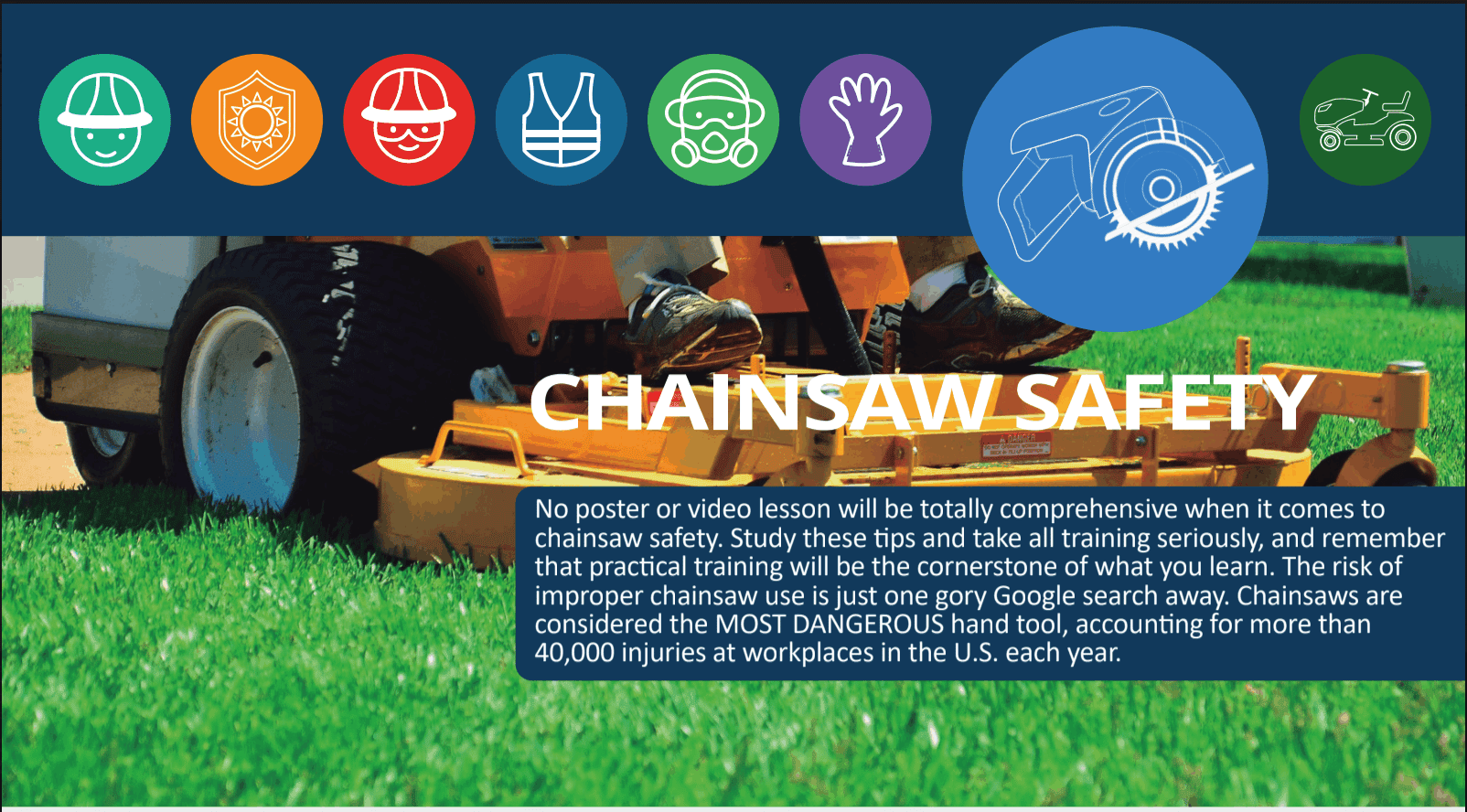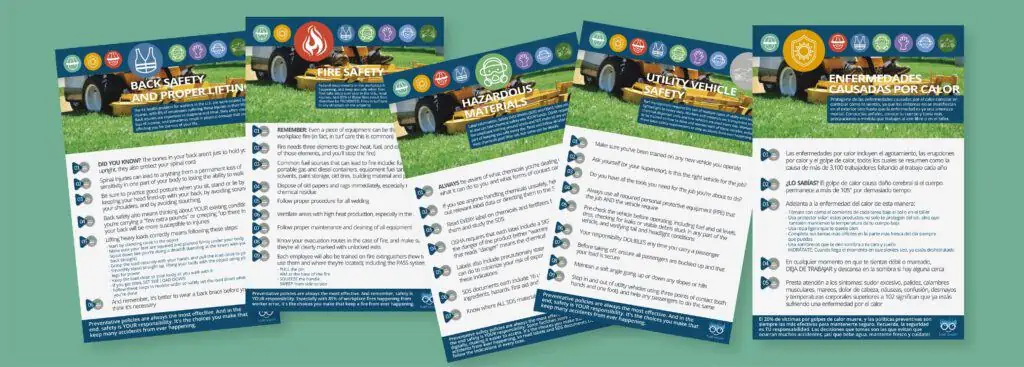
Chainsaws are easily the most dangerous tool you will encounter in the workplace. It isn’t hard to guess why—according to the CDC, chainsaws account for nearly 40,000 injuries at workplaces in the U.S. each year.
Therefore, it’s your responsibility to learn everything you need to know to stay safe operating chainsaws at work.
It’s important to remember that practical training will be the cornerstone of what you learn. No poster, video or text will be totally comprehensive when it comes to chainsaw safety. That said, we’re going to break down everything you need to know about chainsaw training, personal protective equipment, chainsaw inspection, general use and even emergency protocol. Study these tips and take all training seriously. The risk of serious injury all depends on you.
Before you begin working with a chainsaw
Even if you have operated a chainsaw before, hands-on training is required before using one in the workplace. You also need to be trained on any new make or model that you’re assigned at work. Remember that every chainsaw is different. Take training with new brands seriously, and refer to the operator’s manual for each specific chainsaw if you have questions.
Always make sure you’re wearing all required personal protective equipment (PPE) before using a chainsaw. Ensure you’re equipped with a hard hat and a facial shield (or full-coverage safety goggles), earmuffs or earplugs (or both), gloves, and over-the-ankle boots. Never wear loose-fitted clothing if you know you will be operating a chainsaw that day. And remember, while PPE is required for your safety, it will only protect you so much. It is imperative to still be hyper-vigilant of your surroundings to prevent an accident from happening.
Once you’ve assembled and put on your PPE, you will need to carefully inspect both your chainsaw and your working area before you begin. Going through a mental checklist will help you catch safety hazards before they turn into serious injuries.
When you inspect your working area, ask yourself the following questions:
Likewise, when you inspect your chainsaw, ask yourself the following questions:
General chainsaw usage guidelines
With your safety checklists complete and your PPE all on, you are ready to get to work. But first, you will need at least one other person with you. Never work alone when operating a chainsaw. It’s easy to have a coworker stand nearby while you work. After all, the buddy system could save your limbs—or your life.
And remember, never leave a tree partially cut. A tree that is partially cut but still standing is a massive safety hazard to anyone in the area. One false move by an unsuspecting coworker is all it takes for an injury to occur. If you can start a job, you can finish it.
If the anti-kickback chain, chain brake, throttle lock, right-hand guard or stop switch are disabled or broken on the saw, do not use it. If you have already started using the chainsaw and you notice that any of these features are broken or disabled, discontinue your project immediately and power down the chainsaw.
Always alert others around you when a tree is falling. It is your responsibility to never put a coworker or club member at risk of injury.
Should someone sustain an injury, power down the chainsaw and seek immediate medical attention. Apply pressure to any bleeding wounds while you wait for first aid. Notify your supervisor of any serious injuries that occur on the job.
Takeaways
The Bureau of Labor Statistics states that logging is the second most dangerous profession, and for a good reason: chainsaws.
However, with personal protective equipment and proper practical training, you can safely operate a chainsaw anytime you come to work. The key to avoiding serious injuries on the job is prevention. Ultimately, it’s the choices you make that will keep you and your coworkers safe.
